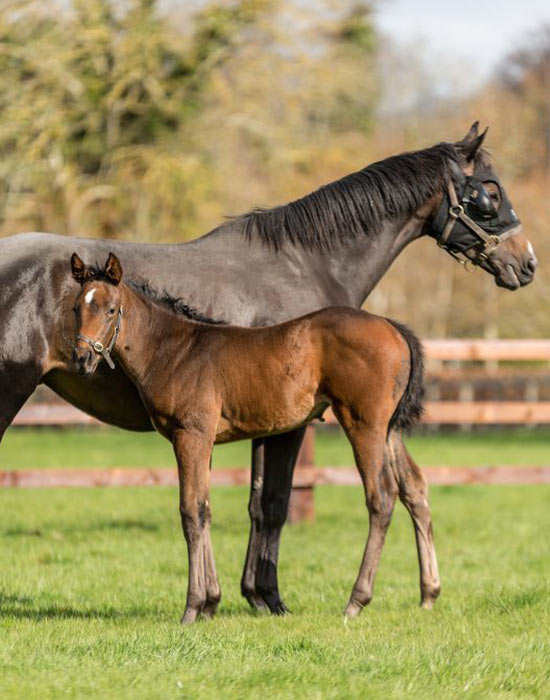
by Sarah Nash
Having a mare stand in a stall for 16 hours per day to facilitate light therapy is not the best option for her fertility. Horses are migratory herd animals that in the wild walk up to 100 km a day. Mares are less stressed and show improved uterine tone when at grass in herd environments and constantly moving. Grazing behaviour allows the natural clearing of fluid from the uterus which can be a common source of sub-fertility in many barren mares.
Our advice to breeders is to try to maintain mares as close to their natural condition as possible – outdoors, as groups at pasture, with freedom to move and express normal patterns of behaviour. Reduce stress wherever possible, provide good quality forage and access to ground- temperature water. Mares naturally want to move more in the weeks before and after foaling. Many dystocia’s could be prevented by allowing them plenty of room to exercise. Exercise helps the foal reposition itself so that foaling can occur smoothly. Exercise after foaling helps the mare’s uterus to return to a normal size and helps with the elimination of any fluid.
Added to this is the high cost of stabling mares for approx 100 days. It takes 70 days on average from the time of initiation of light therapy to first ovulation. The Irish Thoroughbred Breeders Association surveyed breeders and found that the average keep cost per night for a mare under lights was €22.80. Multiply this by 100 days and the savings for outdoor maintenance are substantial.
Providing each broodmare with an Equilume Light Mask allows the completely mobile flexibility of indoor or outdoor living as conditions permit. Leave them outdoors 24/7 and the mask handles light delivery for you. Bring them inside, or even travel, as needed, knowing that the Light Mask is automated, delivering optimum light stimulation to the eye right on schedule, every day. This not only saves you a significant amount of money, but it has been proven that field-kept mares are happier, and happy mares have greater success with all aspects of fertility and pregnancy.
This article is from Equilume and is published here with permission. Find out more about them in our section devoted to Farm Equipment.
































